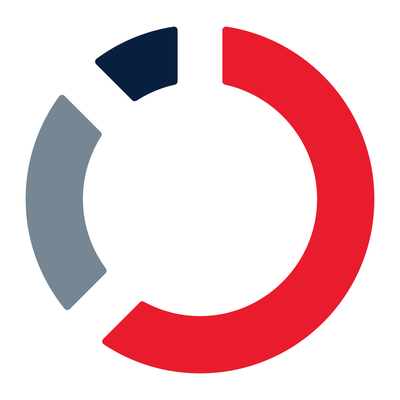WFH Is Dead. Long live WFA. But What Does that Mean for IT?
Sumir Karayi, Founder and CEO of endpoint management leaders 1E, gives four actionable tips to help navigate the new work from anywhere (WFA) world

COVID-19 has caused the fastest change to the way people work in living memory. People who have left the office are not looking to return full-time. The genie is out of the bottle, this is the new reality, and it’s time for IT to support this new paradigm.
As a result of this paradigm shift, fragmented IT disciplines like end-user computing (EUC), digital workplace, employee experience, and ITSM are all rapidly evolving into an emergent category, aptly named "Work From Anywhere’" This crisis has brought into sharp relief the things that are most important to an employee: endpoint performance, immediate response by IT, and collaboration. If people aren’t going back to the office, then IT must support remote employees better, faster, and through all hours.
The biggest change to working life in a generation
In the US alone, 46 million knowledge workers have moved from primarily working in the office to working from home on a full-time basis in a matter of weeks. Their perspective, experience, and requests of IT have obviously changed.
So is remote work working?
1E commissioned the first independent survey of employee experience, expectations and frustrations since COVID. Before the pandemic, only 21% of US knowledge workers worked fulltime from home, and this increased to 89% post-pandemic. Everyone has become dependent on their endpoint as shown by the fact that 98% consider device performance important. This is clearly because the employee now uses their laptop for all work, collaboration, and even some leisure activities.
However, when they experience issues with the endpoint, they often cannot work, or their work is disrupted at the very least, and yet IT staff are often taking hours, days and even weeks to resolve those issues. Common service desk KPIs such as mean time to resolution (MTTR) become extremely important when people simply cannot work while waiting for issues to be fixed. Self-service technologies such as chatbots, when available to the employee, are only used one fifth of the time. Employees do not believe chatbots will solve the issue, pointing toward a lack of maturity in terms of remediation.
These learnings are particularly important today because this crisis will result in winners and losers. The winners will be the ones who can adapt as the world of work changes faster than anyone can remember.
What does IT need to do to win in a remote-first world?
1. Get onboard with WFA -- it's here to stay
IT must support this changing paradigm to work itself. While working from home was slowly increasing in scope every year, this is a change that affects 46 million people in the United States. In a 10,000 people company, 6,000 people have shifted their primary work location. This means that the demands on IT have changed significantly. IT must be able to manage the endpoint in the same manner as if they were managing a local machine, at organizational scale. If IT cannot adapt, then the experience of remote employees will remain inferior to the office, and IT will be blamed as a hindrance rather than an enabler for this revolution.
2. Realize that real-time IT is now the central nervous system of every enterprise
The challenge is that most endpoint management tools are simply too slow. To ask even the simplest question, many steps are involved, each increasing delay and the chance of failure. These systems worked in a world where all the endpoints were in the office. But endpoints are now remote, often have unreliable connections, and are on only while the employee is working. Additionally, IT has to do more every day to keep them secure and operational. WFA solutions need real-time design. In this context, real-time can be simply defined as the shortest time for an IT operation, which means it should be done in a single packet exchange. Given that most IT tasks involve multiple steps, instant response also means that the task can be completed in a single thought process.
3. Embrace autonomic management of all IT systems, starting with the endpoint
Today, most complex IT tasks are still performed by people and this needs to change through much more automation. As our Work from Anywhere research shows, employees prefer to call the service desk rather than use self-help technologies such as a chatbot. This is because there isn’t sufficient automation available for the chatbots or self-help portals to be useful, and employees know this. Enterprises should invest a little in an automation framework, and then invest a lot in the automation itself. At its simplest, it’s about augmenting humans first with automation, letting them troubleshoot issues, proving it works end-to-end, and then using the same automation in chatbots or even autonomic management.
4. Focus on integration wherever it helps to automate business processes
Integrated solutions are better than silos. This is because every silo requires redundant operational effort and, more importantly, prevents business processes from being automated. It’s highly likely that your organization has significant investments in Microsoft and ServiceNow. Any solution you invest in should integrate deeply with both so you can automate the processes your employees care about. You should always start with the service desk. This is the first port of call for your employees and it should be for your IT team. If you can build business process automation directly into ServiceNow ITSM then it can be used to improve first call resolution and response times -- and, ultimately, create a better remote employee experience.
1E’s Work From Anywhere Enterprise Conference 2020
Many more facts were gathered by the research and are discussed in detail in our latest report "The New Digital Workplace: Employee Experiences With Universal Remote Working Since COVID". You can get that research here.
We’ll also be unpacking the research with a cross-functional group of industry leaders from ServiceNow, Forrester, Microsoft, NTT DATA, Constellation Research (and a whole host more) on July 29 and 30 for the first-ever Work From Anywhere Enterprise Conference 2020. Sign up to the conference here -- but don’t worry if you’re reading this after it’s happened because if you hit the link you’ll get all the content.
Sumir Karayi, CEO of 1E, founded 1E, an endpoint management company, in 1997 with the goal to drive down the cost of IT for organizations of all sizes. Under Sumir’s leadership, 1E has become a successful global organization and has been inventing solutions to help IT get more done every day for 20 years. 1E is also a trusted partner, with 31 million licenses deployed across more than 1,700 organizations in 42 countries worldwide.
About the Author
You May Also Like






